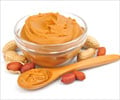Food prepared outside home is typically higher in calories and lower in nutrition than food prepared at home.

Researchers from Drexel University and the University of Pennsylvania studied more than 2,600 menu items served at full-service restaurant chains operating in Philadelphia and concluded that foods served at full-service restaurant chains are high in calories, saturated fat, and sodium, and that standard definitions are needed for ‘‘healthy choice tags and for entrees targeted to vulnerable age groups.
Nutrition information provided at full-service restaurants has lagged behind fast-food restaurants; however, a 2010 menu labeling ordinance in Philadelphia provided an opportunity for an in-depth study of the calorie and nutrition content of menu items served at full-service restaurants. The study included 21 full-service restaurant chains which offered single-serving entrees and provided calories and sodium information for all menu items on either their websites or printed menus.
The study focused on entrees, appetizers, and side dishes, but also provided information on other less consistently labeled menu categories. "The need to educate customers about the nutritional content of restaurant foods is acute because consumers increasingly eat away from home, restaurants serve large portions of energy-dense and high-sodium foods, and obesity and the prevalence of other diet-related diseases are high," according to lead researcher Amy Auchincloss, PhD, MPH, of the Drexel University School of Public Health.
Although no guidelines exist for appropriate nutrient levels of full-service restaurant menu items, about half of the entrees did not meet the study's "healthier" calorie criteria, based on general nutrition advice in the US Dietary Guidelines. Almost one-third of the entrees exceeded the total daily recommended value (DRV) for sodium, and only one-fifth met recommended fiber minimums.
Items targeting seniors and children had fewer calories, but often exceeded the DRV for fat and sodium. More than half of the studied restaurants designate some healthy choices on their menus, but the meaning of that designation varies; in most cases, only calorie content is considered and they may still have high sodium levels.
Advertisement
NOTES FOR EDITORS
"Nutritional Value of Meals at Full-service Restaurant Chains," by Amy Auchincloss, PhD, MPH; Beth L. Leonberg, MS, RD, CSP, FADA, LDN; Karen Glanz, PhD, MPH; Samantha Bellitz, MS, MPH; Andrew Ricchezza, MS; Allison Jervis, MS, Journal of Nutrition Education and Behavior, Volume 46, Issue 1 (January/February 2014) published by Elsevier.
An audio podcast featuring an interview with Amy Auchincloss and information specifically for journalists are located at www.jneb.org/content/mediapodcast. Excerpts from the podcast may be reproduced by the media; contact Eileen Leahy to obtain permission.
ABOUT THE JOURNAL OF NUTRITION EDUCATION AND BEHAVIOR (www.jneb.org)
The Journal of Nutrition Education and Behavior (JNEB), the official journal of the Society for Nutrition Education and Behavior (SNEB), is a refereed, scientific periodical that serves as a resource for all professionals with an interest in nutrition education and dietary/physical activity behaviors. The purpose of JNEB is to document and disseminate original research, emerging issues, and practices relevant to nutrition education and behavior worldwide and to promote healthy, sustainable food choices. It supports the society's efforts to disseminate innovative nutrition education strategies, and communicate information on food, nutrition, and health issues to students, professionals, policy makers, targeted audiences, and the public.
The Journal of Nutrition Education and Behavior features articles that provide new insights and useful findings related to nutrition education research, practice, and policy. The content areas of JNEB reflect the diverse interests of health, nutrition, education, Cooperative Extension, and other professionals working in areas related to nutrition education and behavior. As the Society's official journal, JNEB also includes occasional policy statements, issue perspectives, and member communications.
ABOUT ELSEVIER
Elsevier is a world-leading provider of scientific, technical and medical information products and services. The company works in partnership with the global science and health communities to publish more than 2,000 journals, including The Lancet (www.thelancet.com) and Cell (www.cell.com), and close to 20,000 book titles, including major reference works from Mosby and Saunders. Elsevier's online solutions include ScienceDirect (www.sciencedirect.com), Scopus (www.scopus.com), SciVal (http://info.scival.com) Reaxys (www.elsevier.com/reaxys), ClinicalKey (www.clinicalkey.com) and Mosby''s Suite (www.confidenceconnected.com), which enhance the productivity of science and health professionals, helping research and health care institutions deliver better outcomes more cost-effectively.
A global business headquartered in Amsterdam, Elsevier (www.elsevier.com) employs 7,000 people worldwide. The company is part of Reed Elsevier Group plc (www.reedelsevier.com), a world leading provider of professional information solutions. The group employs more than 30,000 people, including more than 15,000 in North America. Reed Elsevier Group plc is owned equally by two parent companies, Reed Elsevier PLC and Reed Elsevier NV. Their shares are traded on the London, Amsterdam and New York Stock Exchanges using the following ticker symbols: London: REL; Amsterdam: REN; New York: RUK and ENL.
Source-Newswise















